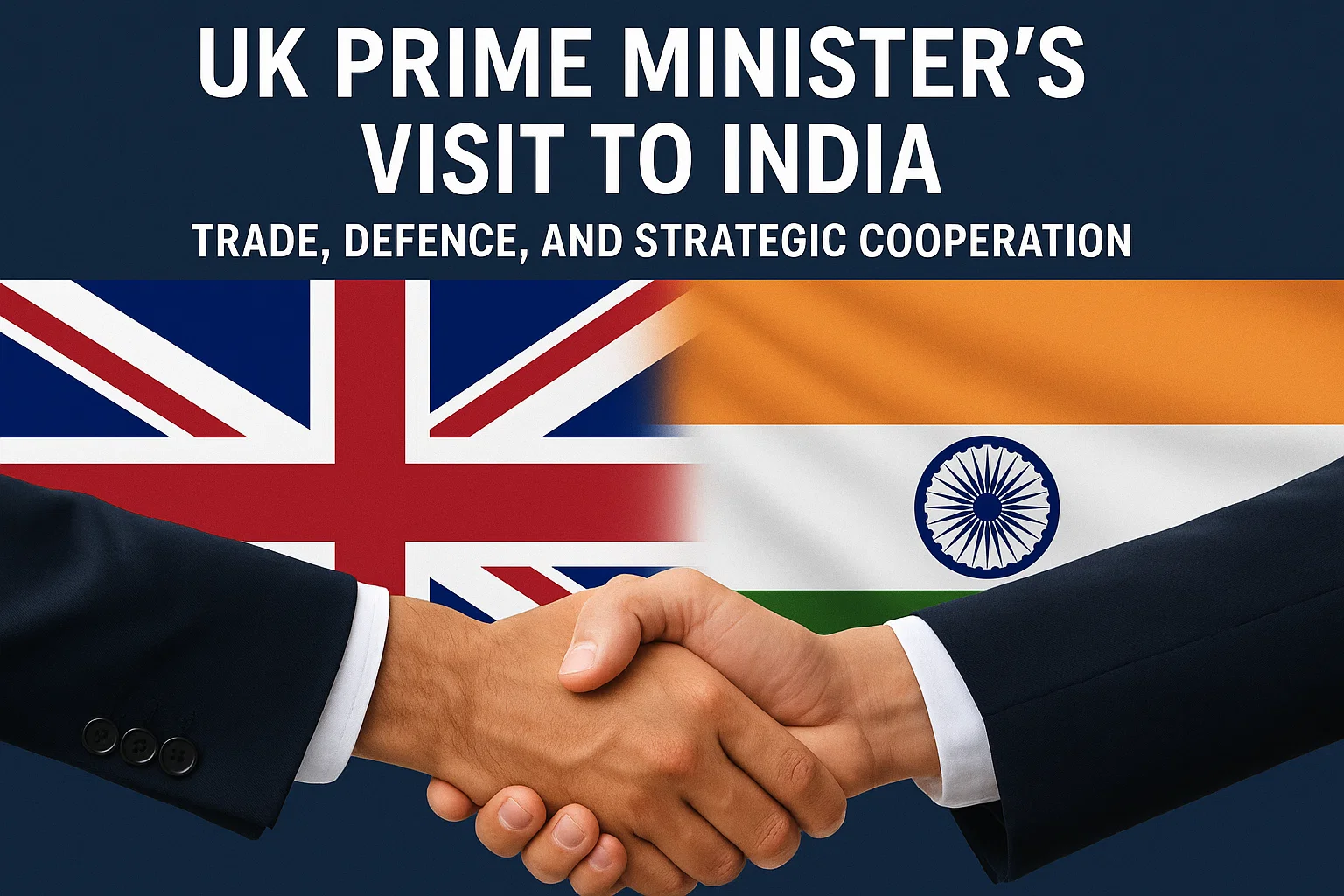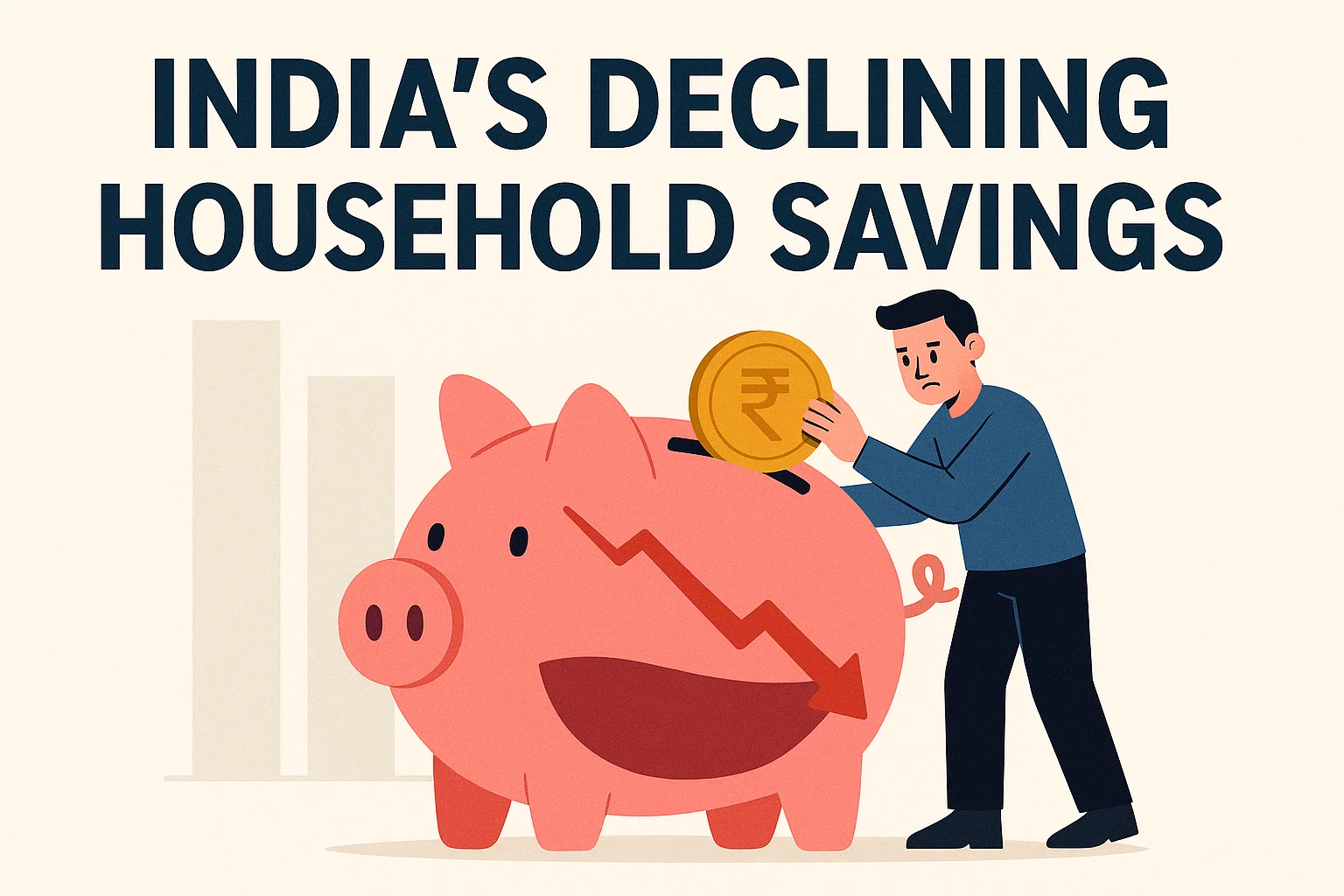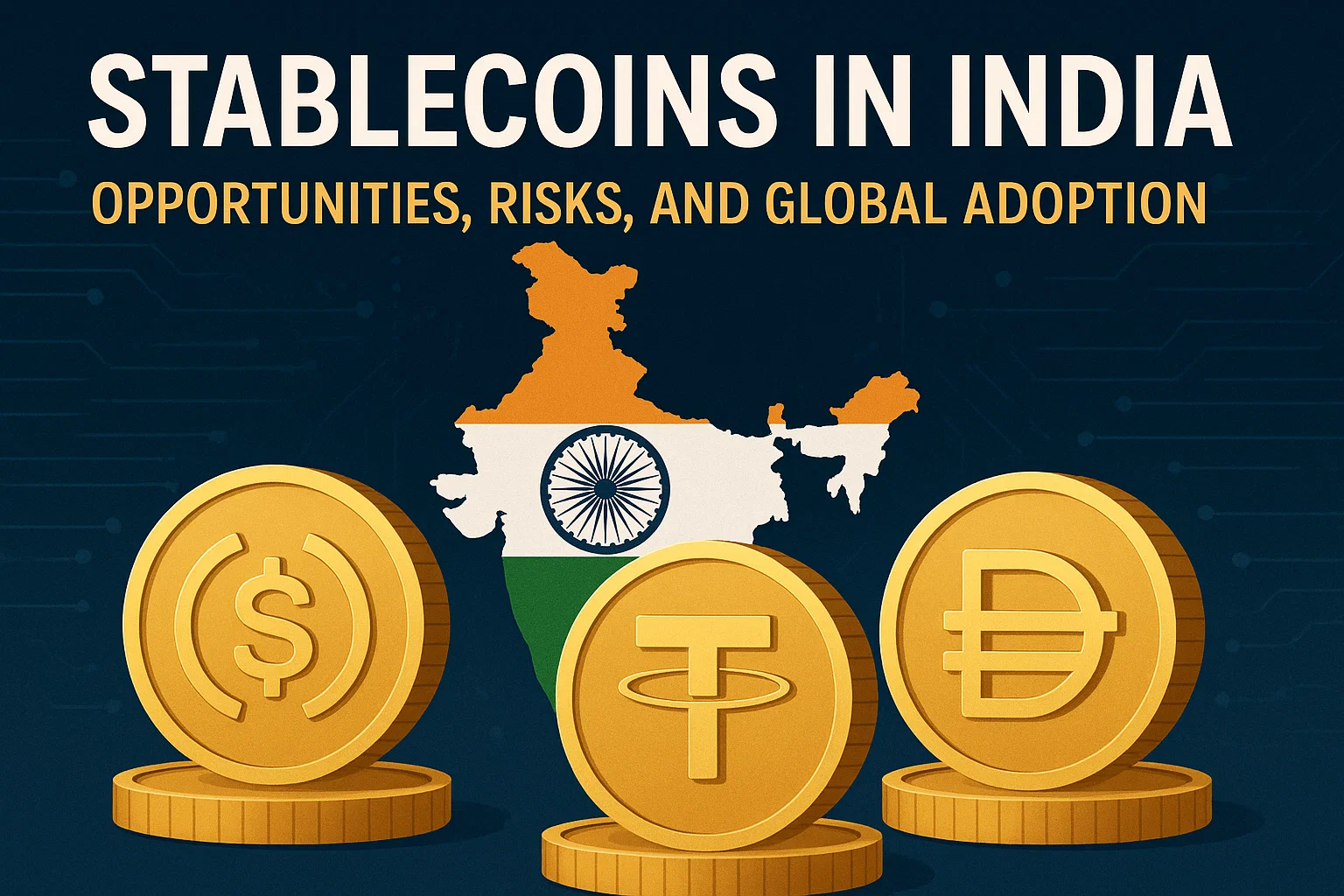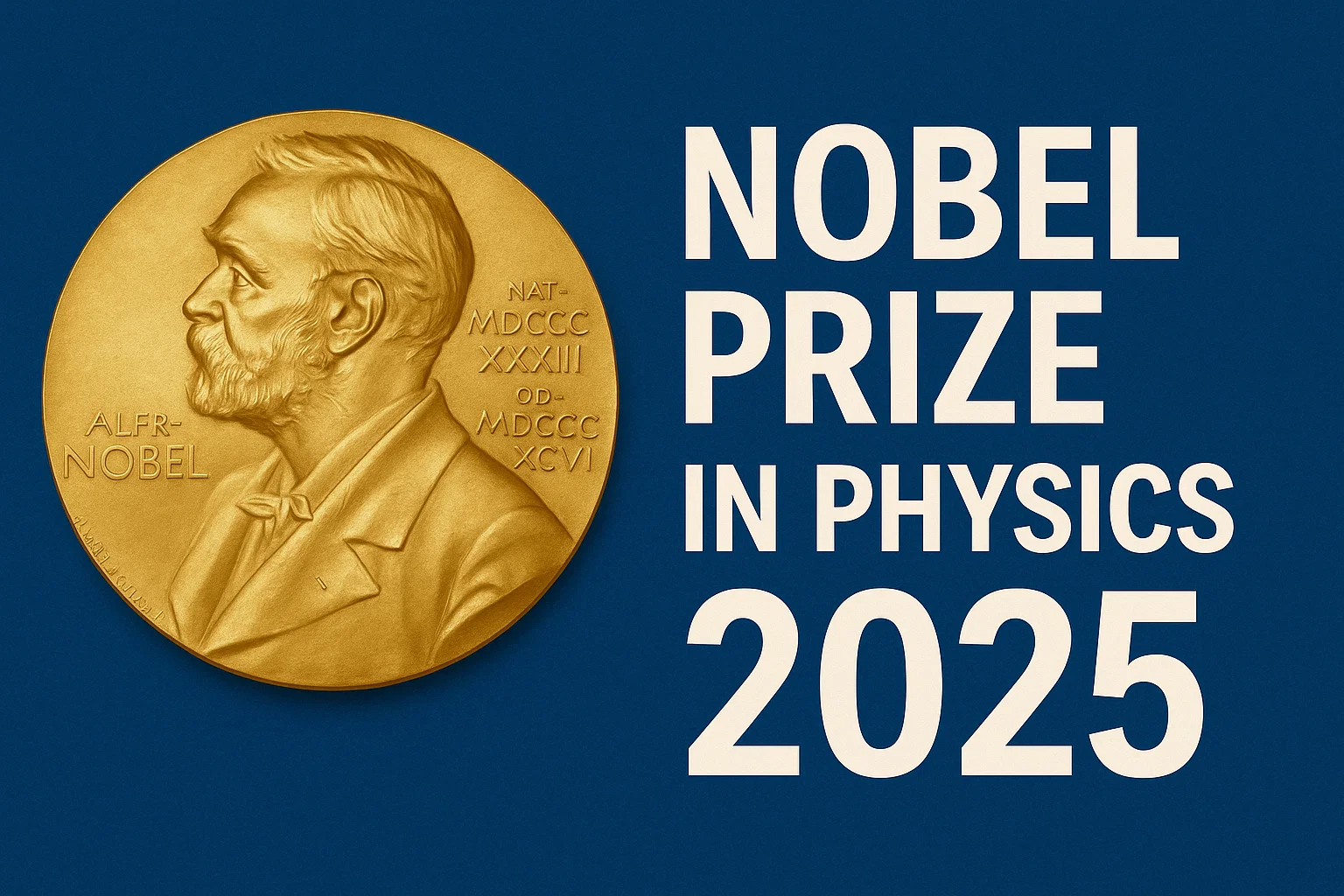UK Prime Minister’s Visit to India: Trade, Defence, and Strategic Cooperation
Explore the UK Prime Minister’s visit to India, highlighting bilateral trade under CETA 2025, defence cooperation, climate initiatives, technology partnerships, and education and diaspora engagement.
Context
The maiden visit of the UK Prime Minister to India represents a renewed effort to enhance bilateral relations across trade, defence, technology, and climate initiatives. Against a backdrop of global uncertainty, the visit highlights India and the UK’s intention to deepen cooperation in key strategic and economic areas.
)
Trade and Economic Partnership
India is now the 11th largest trading partner of the UK, with bilateral trade in goods and services valued at around £44 billion in FY2024 (UK Department for Business & Trade). The Comprehensive Economic and Trade Agreement (CETA), signed in July 2025, aims to increase bilateral trade by over £25 billion annually, reaching nearly £90 billion by 2030.
Key features include:
-
Zero duty on 99% of tariff lines, benefiting Indian exports such as textiles, auto components, and gems & jewellery.
-
Investment flows: Over 970 Indian firms operate in the UK, employing 1.1 lakh people, while 660 UK companies employ over 5 lakh people in India.
-
Institutional frameworks like JETCO (Joint Economic and Trade Committee) and the Economic and Financial Dialogue (EFD) guide policy alignment in fintech, capital markets, and green finance.
Defence and Security Cooperation
Defence collaboration has strengthened under the India–UK Defence Industrial Roadmap, which emphasises co-development and co-production in line with Make in India initiatives.
-
Joint exercises such as Konkan 2025, Cobra Warrior, and Ajeya Warrior enhance operational synergy.
-
Collaboration extends to cybersecurity, AI, and defence technologies through initiatives like the Technology Security Initiative (TSI) and the Indo-Pacific Oceans Initiative.
Climate, Green Growth, and Technology
Both nations co-founded the One Sun One World One Grid (OSOWOG) initiative, committing to clean energy cooperation.
-
The Green Growth Equity Fund mobilises investments for renewable infrastructure.
-
The planned India–UK Net Zero Innovation Virtual Centre will focus on green hydrogen and industrial decarbonisation, supporting India’s Net Zero by 2070 and reinforcing the UK’s leadership in green finance.
Education, Mobility, and Diaspora
India’s diaspora in the UK exceeds 1.8 million, contributing 6% of UK GDP. The Migration and Mobility Partnership Agreement (2021) eases professional exchanges.
-
Education ties are robust: over 170,000 Indian students study in the UK.
-
British universities, such as Southampton, are opening campuses in India aligned with NEP 2020 reforms, fostering collaboration in research and higher education.
Significance Amid Global Geopolitical Flux
The India–UK partnership is strategically vital amid U.S.–China rivalry, the Ukraine war, and a fragmented West.
-
Strategic Realignment: Both countries pursue multi-alignment, cooperating across global blocs while maintaining strategic autonomy. The UK’s Global Britain strategy converges with India’s Act East Policy and Indo-Pacific Oceans Initiative to ensure stability in the region.
-
Economic and Trade Synergy: Post-Brexit, the UK seeks new markets; India offers scale, skilled manpower, and innovation. CETA strengthens trade resilience and counters protectionism.
-
Technology and Innovation: Partnerships in AI, 5G/O-RAN, semiconductors, and fintech build secure alternatives to China-dependent systems.
-
Defence and Security: Joint exercises improve maritime security and counterterrorism capabilities, while the Defence Industrial Roadmap supports R&D and production under Make in India.
-
Climate and Sustainable Growth: OSOWOG and the Green Growth Equity Fund advance renewable energy investments, promoting both nations’ climate goals.
Conclusion
The UK Prime Minister’s visit reinforces the multidimensional partnership between India and the UK. Strengthened trade, investment, defence cooperation, technological collaboration, and climate initiatives position both countries as key partners in a multipolar world. These efforts demonstrate how strategic alignment, economic integration, and sustainable growth can coexist in an era of global uncertainty.
Subscribe to our Youtube Channel for more Valuable Content – TheStudyias
Download the App to Subscribe to our Courses – Thestudyias
The Source’s Authority and Ownership of the Article is Claimed By THE STUDY IAS BY MANIKANT SINGH





